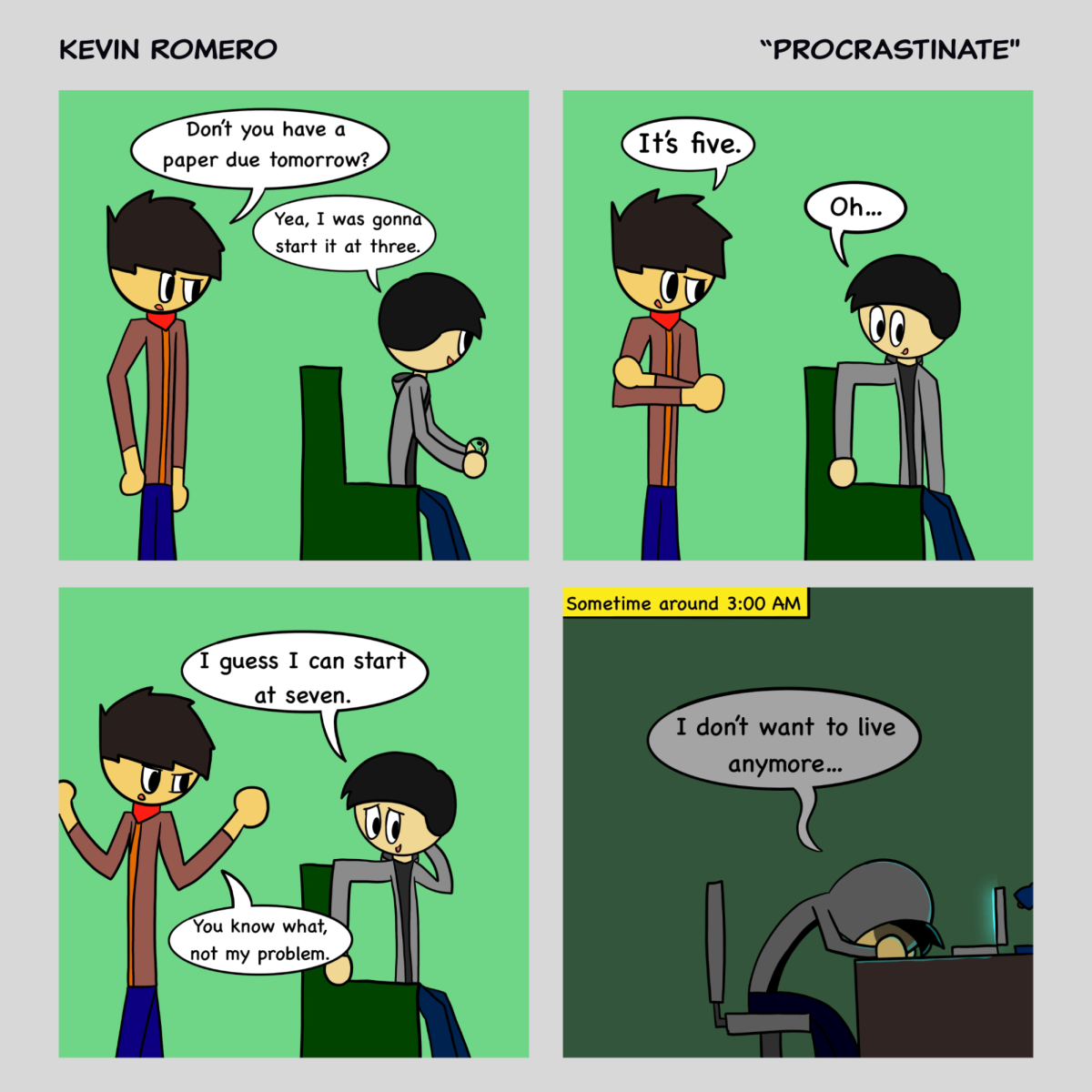
2017’s The Legend of Zelda: Breath of the Wild stands today as one of the most ambitious, yet exceptional games of all time. It took “The Legend of Zelda” brand and brought it to new heights. Its sequel, The Legend of Zelda: Tears of the Kingdom, had a lot to live up to. Many people were worried that this game just wouldn’t capture the same feeling of adventure that its predecessor managed to invoke. Following up on such a massive success is never an easy task. Even right up to the game’s release, there was much discourse surrounding whether or not it would meet expectations. However, once people saw Link retake his first steps into the massive world, all that fear dissipated and we were left with an amazing journey across land, sky, and the abyss.
It’s been apparent for quite a while that the Nintendo Switch is an aging console, especially with some recent releases such as Bayonetta 3, but despite the extremely limited hardware by contemporary standards, Tears of the Kingdom is one of the most impressive technological feats I’ve seen in gaming in quite a while. This game is absolutely massive as it is essentially over twice the size of its predecessor, Breath of the Wild. The world looks even better than the previous game with even better draw distances and lighting (which was already impressive before).
There are so many little innocuous things that might not seem impressive but I’ve seen actual game developers be amazed and perplexed with how Nintendo pulled off such a technological marvel. The physics are impressive even by 2023 standards with some of the most clever and interesting puzzles and moments deriving from these absolutely awesome systems. As I said, this game is quite a looker for a console that is less powerful than new iPhones. This is partially because of the fantastic art style that they established in Breath of the Wild. At times, the game looks breathtaking (pun intended).
The combat in Tears of the Kingdom is admittedly just a tad bit disappointing, outside of the fuse mechanic, there really aren’t many huge improvements to the core mechanics of Breath of the Wild, which I found to be pretty flawed. The combat is serviceable enough but I can’t help but feel like it’s just a tad bit shallow at times especially compared to some other massive releases recently such as Elden Ring and God of War. I wish there were just a bit more complex and cool techniques you could use in battle to make it feel more dynamic than just jumping out of the way of an enemy’s attack and hitting them. Don’t get me wrong, there definitely is some nuance and skill to the combat. I just wish they went further with it because as it stands, the core mechanics pale in comparison to other games of its type.
Parrying in particular is just not good at all. The timing for parrying has always felt kind of off compared to other games with this kind of mechanic like God of War, Dark Souls, Jedi Survivor, and more. It just never felt as responsive as it should, but in Breath of the Wild, it at least had some utility in deflecting guardian lasers which would instantly kill most players otherwise. Here, though, there is absolutely no reason to ever even try to parry an attack. Instead, all you have to do is jump out of the way of an enemy’s attack at the right time and you can slow down time and do a flurry rush which will let you deal massive amounts of damage. This is also a much safer option to do than parry because if you fail a parry you’re gonna get hit whereas you still evade an enemy’s attack if you jump out of the way. The parrying just comes with significantly more risk and not enough reward for that risk.
I also think a proper rolling dodge would have helped this combat immensely because as it stands it’s kind of hard to really position yourself quickly in a fight to give you maximum advantage. I also think an addition of proper heavy attacks in this game would have been nice so that you have more options in terms of melee combat abilities.
Tears of the Kingdom doesn’t pull its punches. It spits you out into the world with a broken sword and watches as you struggle to fight a few basic enemies. Since this game is a direct sequel, it expects you to have retained your understanding of how to fight enemies. At times, I found myself getting bodied by enemies that otherwise shouldn’t be too hard to beat. This stayed consistent throughout most of the game. I even found some of the game’s bosses easier to beat than normal enemies found in the overworld. For example, there’s an enemy called the “Gloom Hands” that can be found during parts of the game. These guys are straight out of a horror movie. They’re giant hands with eyeballs, and they chase you while you run away in absolute fear. Not only are these guys fast, but they’ll grab you and sap away your health as you struggle to escape. Your best bet to beat them is with bomb arrows, but if you don’t react quickly enough, even they won’t save you.
The difficulty can be mitigated thanks to the sages. As you progress through the main story, you’ll unlock magical orbs that can summon characters to fight alongside you. These are controlled exclusively by AI, save for one ability from each sage that you can activate with the “A” button. These sages can literally play the game for you during fights, making the game a piece of cake once they’ve all joined you. The widely inconsistent difficulty makes for a bit of a rocky progression. That being said, you can dismiss any of the sages at any time if it feels like they’re taking all the glory.
Part of why the game is so challenging is because the weapons you get are actual pieces of garbage. I honestly think Link would have more luck punching the enemies rather than using the game’s default weapons. Not only are you given the most bland weapons at the start, but any weapons that you’d expect to be stronger aren’t due to their decay. You read that right, most weapons have decayed due to Ganondorf’s revival in the opening cutscene, so you’re stuck taking only a small portion of health from enemies with each attack. Now at first, that may seem like an awful gameplay decision. However, Tears of the Kingdom has a solution, and it comes in the form of one of Link’s new abilities.
Remember the Sheikah Slate from the first game? The little ancient iPad that allowed you to use a plethora of different abilities? Yeah, well that’s gone. Link now uses his new special arm that some ghost surgically lodged into his body inside a cave. His arm comes with four major abilities that are unlocked in the opening area: Ultrahand, Fuse, Ascend, and Recall. Combined, these abilities make for some impressive gameplay. First, I’ll start with Fuse.
You know how I mentioned that there’s a new ability that acts as a solution for the horrendous weapons? That would be Fuse. It allows you to take almost any material and item in the game and fuse it with your weapon. This can do a range of things, like increase that weapon’s durability, power, and even add elemental effects. The same can be done with arrows and shields. If there’s an enemy that hits hard, simply attach a boulder to your shield for some extra protection. Is there something you want to burn in the distance? Attach a firefruit to an arrow and watch it go up in flames. The possibilities seem endless, and it provides some much-needed relief since your weapons can be improved somewhat.
Next, I’ll group Ascend and Recall together. These abilities can mainly assist with traversal. Ascend lets you literally ascend upwards, through the ceiling. As long as the roof is low enough and there isn’t anything blocking you when you emerge, you can watch Link pass through solid objects to escape caves, get more height, or reach treasure. Recall on the other hand (get it?) lets you turn back time for an object. Say you see a giant piece of stone fall from the sky. If you climb atop that stone when it lands and use Recall on it, you’ll suddenly start riding it into the sky, allowing you to glide towards a new sky island or a different part of the world map. This doesn’t strictly apply to rocks, though. Pretty much every object in the game can be Recalled, and it provides a means for new puzzle-solving and world traversal.
Finally, we have Ultrahand, and oh my goodness is it a blessing. This has to have the single most potential from any ability in a Nintendo game, maybe even video games in general. Ultrahand lets you pick up pretty much any object that isn’t an NPC. You can move it around the environment and change its position. However, that alone wouldn’t make it anything special. No, what really puts this ability on top is that you can fuse objects together. And I don’t mean that in the sense that you can fuse objects to your weapons like with the Fuse ability. I mean that you can fuse overworld objects together with a green goo. The Tears of the Kingdom developers knew this potential, and they provided items like wheels and fans so you could make vehicles, among other things.
Ever think you’d see Link piloting a tank that blows fire? Want to use wooden planks and spikes to create a death trap so you can watch your enemies slowly perish with no hope of escape? Want to torture the little forest spirits known as Koroks simply because you can? Tears of the Kingdom allows for all of this and more just with the Ultrahand ability. I have created so many contraptions and have had so much fun simply combining seemingly random objects together. Every player will have different exposure building with this ability, which I think is an excellent design choice. There’s so much to combine, and it gives a somewhat personalized experience for everyone.
There’s one last ability I want to mention quickly. You can unlock the Autobuild ability part-way through the game, and it lets you automatically build anything you’ve previously created with Ultrahand. If you’re near any of the materials you need, it’ll take those materials. Otherwise, it’ll cost a new item called Zoniate if you want to rebuild your creations. The game also provides schematics that you can find which have pre-built designs for your convenience. Although, I don’t think I ever used a pre-built contraption once in my playthrough. It kind of felt unneeded, especially since I tended to prefer my own creations over the ones featured in the schematics.













